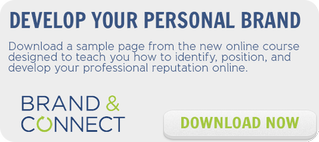 When you hear the word Mercedes it is likely that a visual image of a luxury German automobile pops immediately into your mind. Likewise, when people hear McDonald’s it conjures a specific image almost immediately. You might picture a restaurant with golden arches somewhere near your home or your favorite menu item. You might see a logo, hear the company’s jingle, or recall an experience you had at a McDonald’s restaurant.
When you hear the word Mercedes it is likely that a visual image of a luxury German automobile pops immediately into your mind. Likewise, when people hear McDonald’s it conjures a specific image almost immediately. You might picture a restaurant with golden arches somewhere near your home or your favorite menu item. You might see a logo, hear the company’s jingle, or recall an experience you had at a McDonald’s restaurant.
Such is the power of branding. From FedEx to Kleenex, from Macy’s to Applebee’s. Having a brand means that an image pops immediately to mind when you hear or see the name.
And the same is true of you. You have a brand.
For anyone familiar or acquainted with you, an image pops immediately into their mind as soon as they see or hear your name. It might be good and favorable. It might be something else. But for the people you’ve worked for or with, your friends and neighbors, your family and relatives, your name conjures up your brand and its leading characteristics. And that includes clients and prospects; as soon as they see or hear your name, they are likely to picture… something. What they think of when they think of you is your professional brand.
Professional branding doesn't just happen. It is the sum of planning, execution, anticipation, satisfaction, reputation, and more.
McDonald’s developed a system for serving their customers, and then told customers what to expect. It was important that they then lived up to or exceeded those expectations. And through abundant marketing, they taught people to associate their name with Ronald. The Golden Arches. Combo meals. Those delicious fries.
Likewise, your brand didn’t just happen. When your customers work with you, it’s because you’ve built an expectation (a promise). When they renew with you or recommend you, it’s because you’ve delivered on that promise or exceeded that expectation in the past, and they’re confident that you can do it again. (That’s if you have a favorable brand.)
An important aspect of branding is the realization that not everyone has had the opportunity to work with you. (Plenty of people on this planet have never set foot in a McDonald’s.) So how do you develop your brand among never-before or first-time customers?
It’s all about the way you create expectations.
- Does your LinkedIn page focus on how you have succeeded? Or how you’ve helped your clients succeed?
- Does your personal social media profile (Facebook, Twitter) contradict your professional profile (LinkedIn)? Do you look like a professional in one, but a party animal in the other? Which “brand” do you think prospective customers are more likely to believe?
- Does your personal marketing resume point to accomplishments that demonstrate your experience, expertise, and problem solving capability?
- Does your correspondence—from email to voicemail to in-person communication and presentation style—reinforce the idea that you’re a professional?
A brand helps prospects and customers distinguish between one option and another. Absent a personal brand, your distinctions appear less valuable and your services become a commodity.
When someone sees or hears your name, an image pops immediately into mind. It could be favorable. It could be unfavorable. In could be not much more than a blank space.



